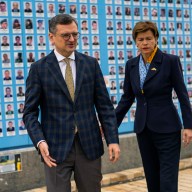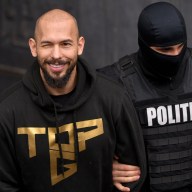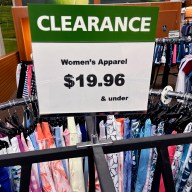Listening to Laura Cantrell, you may be surprised to find out that she’s a New Yorker. It may have come as a surprise to Cantrell, herself. While attending Columbia, the Nashville-raised singer discovered an unexpectedly robust country music scene and decided to stay put while she began her recording career. “I think that there are country music fans everywhere,” she says. “When you’re dealing music-lover to music-lover, they don’t subscribe to the cliches.” She is currently working on a new album of original songs.
Why did you stay in New York?
I realized early on that, despite my initial shock that there would be a country music audience in New York, there was quite a large and well-informed country audience here — maybe not so much about the current hits of the day, but going back to the folk era. In the Village there were a lot of people who observed the renaissance of Appalachian music and followed that through the ’70s and ’80s … I saw Alison Krauss for the first time at the Bottom Line many years ago. So you could trace, through what came through New York and what the audience liked here, these threads of country music history — and that was always very interesting to me.
How did you find that scene?
There was so much live music in New York; you could see everything from a local band that had rockabilly influences mixed with punk to Merle Haggard or Willie Nelson playing at Tramps or Radio City or the Beacon. Johnny Cash played in New York, too, two or three times every year. There was a long period where the really big icons of country music would make a stop in New York: Dolly Parton, Loretta Lynn, Tammy Wynette — I got to see them all here in New York City.
You’ve covered songs from decidedly non-country artists like New Order and Burt Bacharach. What leads you to cover a particular song?
I think that you choose covers because of what you might be able to do with them emotionally. … When I recorded [Bacharach’s] “Trains and Boats and Planes,” I had just had my daughter and my lifestyle had suddenly changed from being someone who traveled a lot and had the freedom to move, to being, all of a sudden, rooted to my apartment and the rhythms and schedule of my daughter, so for me the wistfulness of that song was a little bit about leaving the freedom to be able to go. At the same time, the song itself is a love song and it’s hopeful … it’s wistful and yet it turns that around. Those were the things that I personally related to.
In the case of “Love Vigilantes,” that was a little bit more self-conscious as a choice because I knew that a New Order song would really be something that was not expected out of a country-folk singer. … It’s a really cool, beautifully written song, and part of me was tempted to go in the direction of “Wink, wink, here’s us doing New Order, aren’t we clever?” and another side of me said, “No, let’s tell the story.” And in doing that, for me, it was much more satisfying. It was like listening to somebody tell a great ghost story and wanting to know, “Well, was it really true? Was the character really a ghost or was that just how he felt?”
















